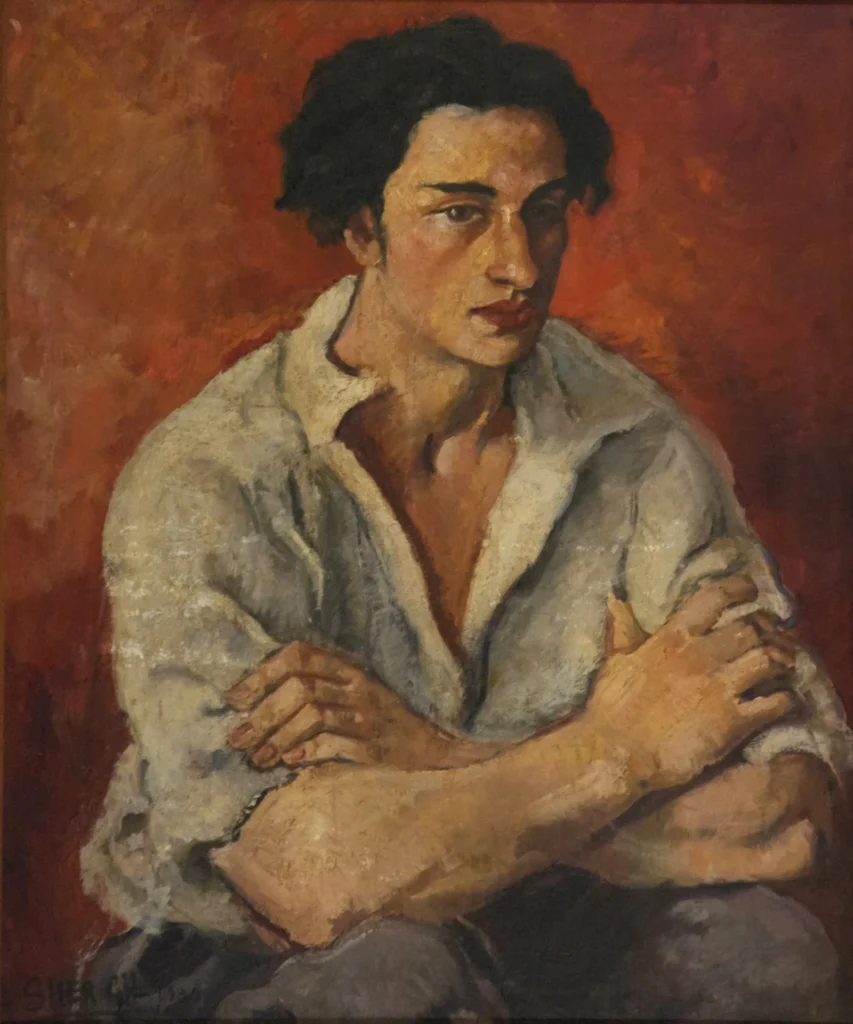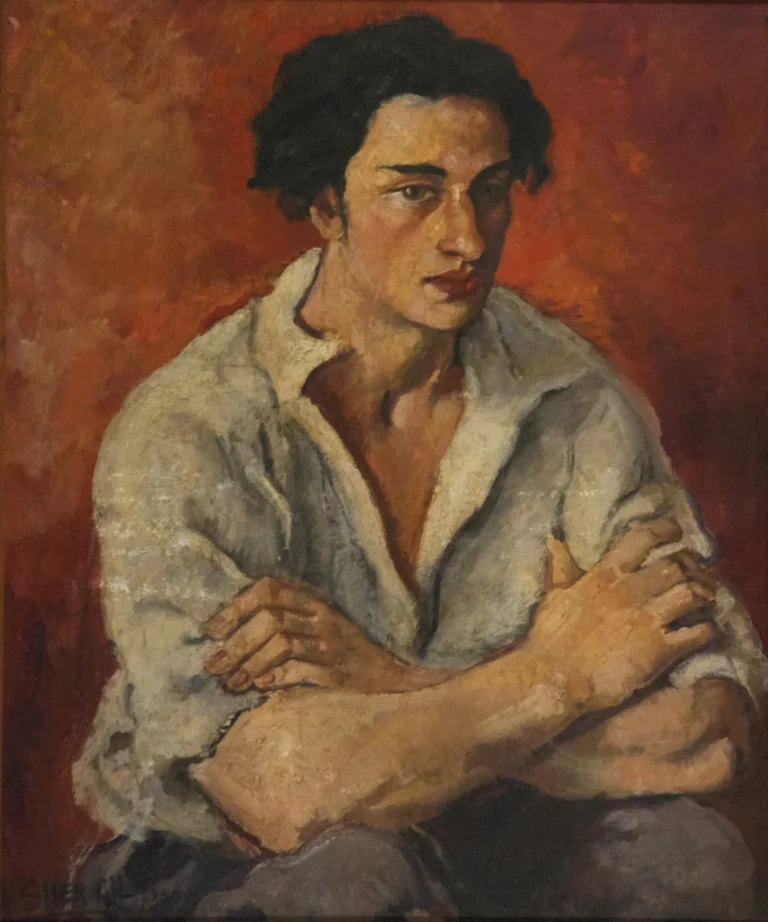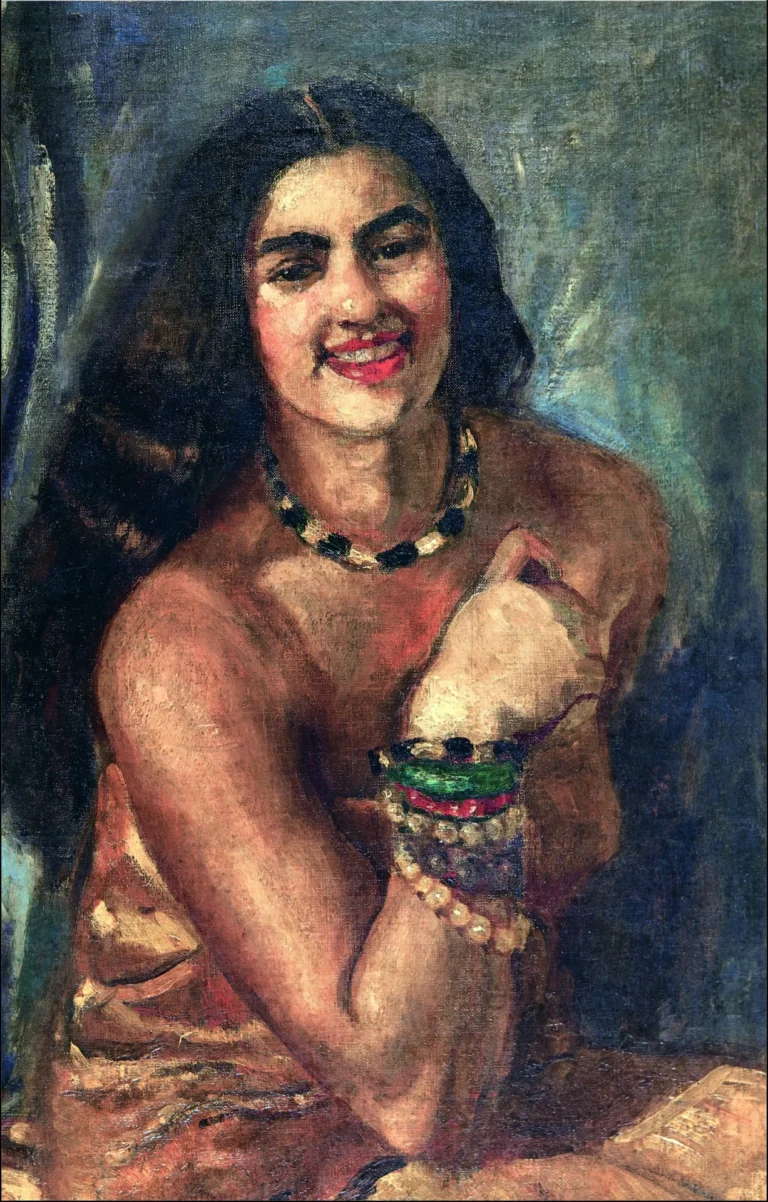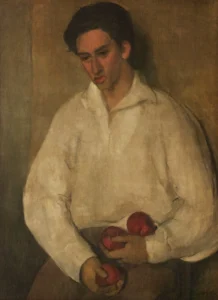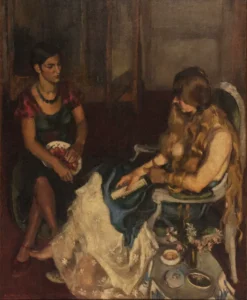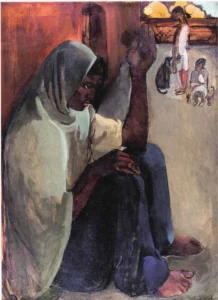Portrait of a young man (1930)
Created in 1930 while studying at the École des Beaux-Arts in Paris, Portrait of a young man is a stunning representation of Boris Tazlitsky, a friend and fellow artist of Amrita Sher-Gil. This early work not only emphasizes her remarkable technical skill but also illustrates her keen understanding of color and composition. Inspired by post-impressionist artists like Gauguin, this painting reflects her artistic evolution during a formative period and marks the starting point of her unique fusion of European and Indian art elements.
1930
About the Artwork
Amrita Sher-Gil, a trailblazer in modern Indian art, painted Portrait of a young man in 1930 while immersed in the rich artistic environment of Paris. At just a young age, she captured the essence of her friend Boris Tazlitsky, demonstrating her remarkable ability to convey character and emotion through her brushwork. As an influential figure, Sher-Gil drew inspiration from post-impressionist masters, allowing her to infuse her academic training with a vibrant, individualistic style. This portrait not only represents her early artistic journey but also signifies a pivotal moment before she began to incorporate the rich heritage of Indian culture into her future works.
Did You Know
Amrita Sher-Gil was born in Hungary in 1913 to a Sikh father and a Hungarian mother, and she moved to India with her family when she was just eight years old, deeply influencing her artistic perspective and cultural identity.
While studying in Paris, Sher-Gil was exposed to the avant-garde movements of the time, which played a significant role in shaping her artistic style. She was especially influenced by the works of Gauguin and the Fauves, leading to her distinctive use of color.
Amrita Sher-Gil is considered one of the first female modernist painters in India. Her works broke traditional barriers and have paved the way for future generations of female artists in the country, making her an iconic figure in Indian art history.




